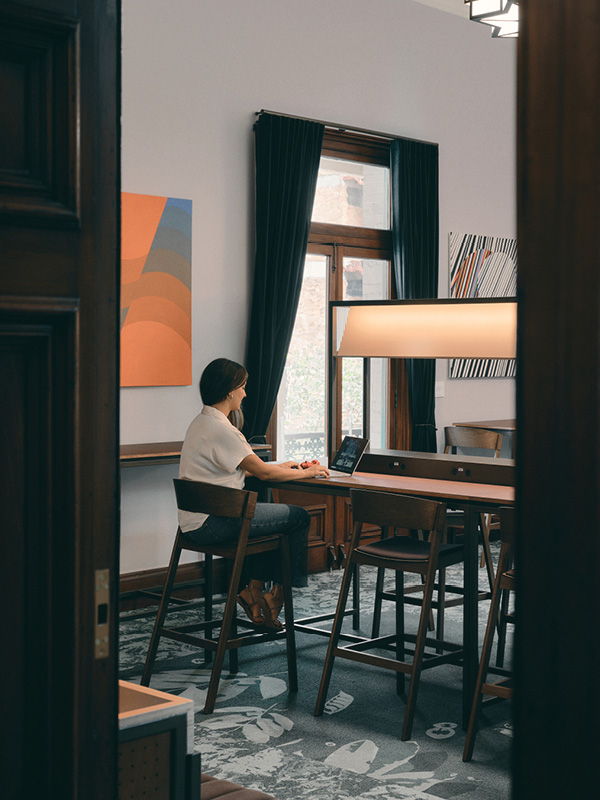Designed by BVN, UQ Brisbane illustrates how thoughtful furniture selection can elevate a project, ensuring spaces are both beautiful and practical. Muuto’s Cover collection is a testament to design’s ability to bridge the past and future, making UQ Brisbane City a beacon of innovation in learning and engagement.
The University of Queensland (UQ) has redefined the concept of collegiality with the establishment of UQ Brisbane City, a dynamic new space for learning and engagement nestled in Brisbane’s central business district. The project showcases the seamless integration of historic preservation and modern adaptive architecture, with Muuto’s Cover chairs and stools playing a key role in this transformation. Their use across various settings exemplifies the brand’s remarkable versatility and design ingenuity.
Commanding a prominent corner site, UQ Brisbane City is the result of an ambitious reimagining of a 19th-century, heritage-listed bank and its contemporary annex. BVN, in collaboration with Heritage Consultant Architectus Conrad Gargett, undertook the challenge of respecting the building’s dual architectural heritage while creating state-of-the-art spaces for learning, collaboration, and industry engagement. The result is an inspiring forum for students, alumni, and professionals to connect and innovate.
The transformation began with meticulous restoration of the building’s historic elements. The ground floor’s grand marble floors, glass dome ceiling, and brass details were repaired, reconditioned, or reinstated. Crimson and violet hues from the dome’s original coloured glass were reinterpreted in floor inlays, timber joinery, and custom carpets. Meanwhile, heritage chimneys were repurposed to deliver fresh air, and new systems for power, data, and ventilation were discreetly integrated.
The annex, with its expansive, flexible floorplates, provides adaptable learning environments designed to host networking events and academic gatherings. The addition of bespoke retractable whiteboards ensures natural light and outward views remain unobstructed, enhancing the space’s functionality.
Cover by Muuto

Muuto’s Cover chairs and stools were selected for their ability to complement the diverse spatial demands of UQ Brisbane City. Their minimalist aesthetic and exceptional craftsmanship align seamlessly with both the historic and modern aspects of the building. The Cover chairs were specified in the Smoked Oak finish. This refined tone highlights the natural grains of the wood, adding subtle grandeur and sophistication to the design. Smoked Oak reflects Muuto’s commitment to selecting hues that transcend trends, offering a timeless yet modern character.
Colours, whether vibrant or subtle, influence our perception of spaces and evoke emotions within users. The deeper tones of Smoked Oak challenge the notion that impactful colours must be bright, instead bringing an understated elegance to the furniture and the surrounding environment. As Julie Myhrvold, Muuto’s Design Manager, notes: “The deeper tones came from the belief that subtle and more silent colours can make just as big of an impression as those that are loud and bright.” This thoughtful approach to colour enhances the atmosphere of UQ Brisbane City’s diverse spaces, offering both visual and functional harmony.
The historic banking chambers serve as communal and social areas, where Muuto Cover chairs and stools support various configurations. Muuto Cover chairs lend a contemporary touch to these refurbished historic spaces, striking a balance between heritage and innovation. The flexible learning suites in the annex benefit from Muuto’s consistent design language, ensuring a cohesive aesthetic throughout the project. Here, the chairs and stools provide practical seating solutions for modular arrangements, catering to workshops, lectures, and collaborative activities.
By incorporating Muuto’s Cover range, UQ Brisbane City underscores the value of versatile, high-quality furniture in adaptive architectural projects. The chairs and stools not only meet the functional needs of diverse user groups but also enhance the building’s dual narrative of historical preservation and contemporary progress.
Photography: David Chatfield

